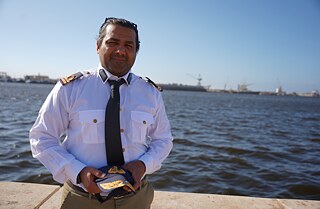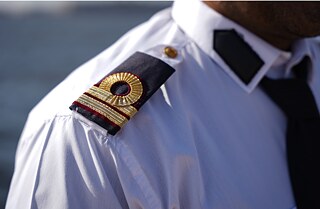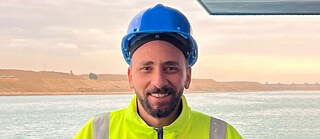Benghazi A second home

For over two decades, Wissam Hassan Al-Kawafi has developed a deep connection with the harbour of Benghazi, where he is greeted every morning by familiar faces and the vibrant sounds of maritime life.
It’s a home away from home. More than 20 years of fostering and building this relationship has made Benghazi’s port a second home for me, and I’m lucky to say that after so many years, we’re not tired of one another.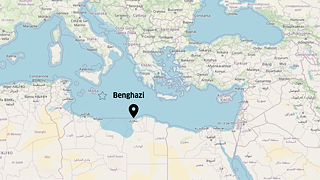
Benghazi is a Libyan harbour city in the north-east of the country. It is located on the Great Syrte, a wide bay in the Mediterranean Sea on the north coast of Libya. | Map: OpenStreetMap.org
I am Wissam Hassan Al-Kawafi, 45 years old and still single. My friends tease me and say that I am too connected to the port that I have no time or need to settle down and start a family. In a way, that’s true. I am so content with my life and its rhythm and routine, in which the port plays a key part, that I found no need for another.
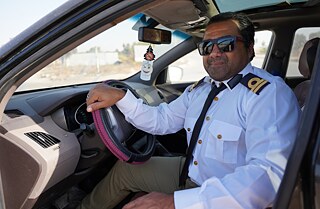
Wissam Hassan Al-Kawafi, 45 years old, witnessed the changes of the Port of Benghazi throughout the last decades. His journey has been filled with both triumph and trauma. | Photo: ©Hendia Alashepy
Two chapters
My journey with this port, sprawled over an area of 4,400-square kilometres, witnessed two phases.I’ve been in the Marine Inspection Department at the Port of Benghazi since 2003. And throughout those years, it's been a smooth and steady relationship, in which I've come to notice and cherish the details of the port, both miniscule and large. From the buzzing sounds of cranes and the crashing of waves, to the squeals of seagulls and the chatter of workers during lunchtime. And also the quietness, which we get a lot more of, more recently.
But my relationship with the port has not been that peaceful. Before 2003, I had worked as a sea officer on board ships transporting goods and commodities. And in 2002, I narrowly survived drowning while boarding the Ibn Hawqal ship, which sank near the Algerian coast. I and 11 others out of 34 crew members survived.
For months, I felt betrayed by the environment I thought I knew well: the port, the sea and the ships. For months, the thoughts that dominated my mind were those related to our drowning, the death of my friends, and our rescue operations. After this incident, I did not expect that I would be able to work again on the port grounds.
But then this trauma gave way to a better and deeper understanding of life, of myself and of my work environment. A different form of relationship developed: one that is built on mutual respect between the port and I, rather than taking it for granted like I previously did. I came to respect the grandiosity of the port and its elements in ways I had not stopped at before. And the port was there for me when I returned, like a loyal friend and a lifetime companion.
And so a different journey began with this port, one which most people in Libya do not appreciate.
While airports are often thought of as the place where people part or reunite with their loved ones, where new chapters start with the end of another, ports aren’t thought of the same way, although they’ve witnessed many drastic endings and beginnings.
I witnessed some of those beginnings and ends myself. Having worked in marine inspection for that many years, I can testify that what I inspect has significantly changed, because the ships that stop at the port are not the same.
Years ago, throughout the early 2000s, Benghazi seaport’s grounds were busy with passengers from all walks of life, and from all around the world, whose ships and cruises would stop at the port for a day or two, enroute to different destinations. The port was seen as any other: a safe place, with a story and people. There would be crowds of women, men and children who would stand for hours in front of the ships in 2000 to stamp their tickets to Italy, Cairo, Morocco and Greece, on board the Libyan ships Toledo, Philadelphia, Qaryounis and others. There would always be a traffic of passengers, and people moving back and forth along the port’s yard and its courtyard.
I’d stand near the officers’ lounge in the port, proudly wearing my white military uniform and my hat studded with the golden eagle on the front, which symbolises the Libyan naval forces, along with my fellow officers in the port, and we would hear the many tongues with which the passengers’ spoke. Eventually, we began picking words from each of these languages. We’d enjoy the sight of people discovering the premises, many of whom have never set foot in Libya before. I always loved how our port was those strangers’ point of entry into Libya, and sometimes, the only interaction they’d ever have with the country.
We’d observe those standing nervously, not knowing where to go, and we’d offer them help. And the women holding tightly onto her fidgeting children, fearing they would fall or play near the dock, or the younger ladies in summary dresses basking in Libya’s sun and excitedly gazing at the sea.
All of these faces were faces of the port which I’ve come to love.
Deep scars
In 2014, a whole new chapter began. The port and the areas overlooking the sea in Benghazi, including Al-Sabri, Jaliana, Al-Lathama, and Qanfouda, as well as the rest of the city’s areas and neighbourhoods, witnessed fierce battles that broke out between the National Army forces and the armed and terrorist groups. The armed groups were smuggling weapons, ammunition, and mercenaries, Arabs, Africans, and foreigners, to the city from the port via small boats, to participate in the war, until these sea crossings were targeted and closed to them.These days were very heavy on all of us. The deep scars left by these battles are still visible across the port’s face despite the ongoing maintenance work. At the eastern anchorage of the port, you can see the damage made by heavy artillery on the wall. Some of the facility’s main facilities were completely destroyed and demolished as a result of the missile bombing.
During those years, the port suffered great damage, and although some of it is fixable, the port just never returned to what it once was. Maritime traffic had completely stopped at that time except for receiving aid and relief ships. Since the liberation of Benghazi in 2017, maintenance work began inside the port but passenger cruises continue to avoid its docks. Nowadays, only one passenger ship docks here, operating on the Benghazi-Misrata-Turkey line, at a very thin pace, and an even thinner number of passengers.
The movement of other ships, those stacked with rows upon rows of cargo and containers, is unaffected, and in fact steady and strong. Like waves, they too keep flowing in. Commercial ships, unlike civilian ones, are in no rush. The humongous carriers firstly linger for what could last as weeks, at the entrance to the seaport overlooking the Mediterranean Sea, waiting to obtain permission to cross to the anchorage.
A huge institution
And it is I who control this movement and traffic. I inspect everything on them, from their safety equipment, their papers and lifeboats, to their content and cargo, and their staff. Once they’re cleared, the ships approach the docks, and a whole chain reaction begins: workers begin unloading the ships, trucks begin trickling onto the waiting bays to load the cargo, forklifts and cranes lifting and arranging containers, and even the port’s cafeteria witnesses actions with ships’ crew members, of all races, stop by for a bite and drink.To have this authority over such a massive facility and the processes and action it entails, is both humbling and invigorating. Without my signature, ships could wait for days, and with it, so much comes to life in my second home.
Hendia Alashepy has recorded the story. A big thank you goes to Wissam Hassan Al-Kawafi for sharing his harbour story.
This piece was published in collaboration with Egab.
